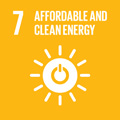- Docente: Laura Sandra Leo
- Credits: 6
- SSD: FIS/06
- Language: English
- Teaching Mode: In-person learning (entirely or partially)
- Campus: Bologna
-
Corso:
Second cycle degree programme (LM) in
Physics of the Earth System (cod. 6696)
Also valid for Second cycle degree programme (LM) in Physics of the Earth System (cod. 8626)
-
from Sep 30, 2025 to Dec 22, 2025
Learning outcomes
By the end of this course the student: 1. is able to quantitatively describe the underlying physical mechanisms and governing equations of selected weather phenomena occurring in complex terrain. 2. is able to identify and interpret the influence of complex terrain features, such as (i) orography, (ii) urban/vegetation roughness, (ii) landcover/landuse thermal heterogeneities, on atmospheric processes and the associated atmospheric circulations at meso- and micro-scales. 3. uses the acquired knowledge to interpret ground-based atmospheric observations of the boundary layer over complex terrain.
Course contents
Starting from a brief review of the fundamental physics laws governing the dynamics and thermodynamics of the atmosphere at the mesoscale, the course will introduce the concept of “complex terrain”, its declinations over different spatial scales (meso- to micro- scale) and geographic conditions, and then deals with specific meteorological phenomena occurring in complex terrain. The course has a major focus on mountain meteorology, but also covers to a minor extend urban meteorology and other advanced topics.
Mountain Meteorology:
- Thermally driven slopes flows: Historical perspective, analytical models and observations.
- Components and diurnal cycle of the mountain thermally driven circulation, and their perturbation by larger-scale flows.
- Thermal structure of the valley atmosphere - the topographic amplification factor.
- Cold-air pool (CAP).
- Dynamically forced winds over mountains: 2D and 3D obstacle configurations.
- Downslope windstorms: shallow-water hydraulic theory, vertical propagating wave theory, wave braking theory
- Characteristics of the atmospheric boundary layer in complex terrain.
- Boundary layer observations in mountainous regions: results from major field campaigns, current challenges, and key applications.
Additional topics
- Analysis of the role of thermal and aerodynamic roughness discontinuities and heterogeneities in the formation of internal boundary layers
- Urban flow patterns from meso- to micro-scale over cities: an introduction to urban meteorology.
- Thermally driven circulations: the urban heat island circulation; the sea breeze circulation and their interaction.
Hands-on Sessions
- Investigation of thermally driven slope flows from flux tower observations. Data processing and interpretation.
- Parametric analysis of flow regimes over an isolated mountain ridge.
Readings/Bibliography
-
Required materials for exam preparation:
Lecture notes and slides provided by the instructor during the course, available on the online platform Virtuale.Recommended texts for further reading:
- Markowski, Paul, and Yvette Richardson. Mesoscale meteorology in midlatitudes. John Wiley & Sons, 2011.
- Barry, Roger G. Mountain weather and climate. Routledge, 2013.
- De Wekker, Stephan FJ, and Bradley J. Snyder. Mountain weather research and forecasting: recent progress and current challenges. Ed. Fotini Katopodes Chow. Vol. 750. Berlin: Springer, 2013.
- Whiteman, C. David. Mountain meteorology: fundamentals and applications. Oxford University Press, 2000.
- Relevant scientific articles may be suggested by the instructor during the course for in-depth exploration of specific topics.
Teaching methods
Theoretical content will be delivered through face-to-face lectures, supported by PowerPoint presentations and complementary explanations on the whiteboard.
Hands-on sessions will take place in the computer laboratory and will focus on the practical application of selected course topics.
In consideration of the nature of this activity and the teaching methods employed, enrollment in this course requires students to have previously completed Modules 1 and 2 on general health and safety training [https://www.unibo.it/it/servizi-e-opportunita/salute-e-assistenza/salute-e-sicurezza/sicurezza-e-salute-nei-luoghi-di-studio-e-tirocinio], delivered through e-learning.
Assessment methods
Learning will be assessed through a final oral examination lasting 50–60 minutes, composed of three distinct parts:
- The first part focuses on the hands-on session, inviting the student to present and discuss their experience and findings.
- The second part involves a question selected by the instructor, addressing a specific concept or theme explored in the lectures.
- The third part consists of an integrative question designed to evaluate the student’s ability to connect and critically reflect on the main theoretical, analytical, and phenomenological elements addressed throughout the course.
Each part of the exam contributes equally (one-third) to the final grade. The final grade will be expressed on a scale of 30, according to the grading criteria outlined below.
- Preparation on a very limited number of topics covered in the course and ability to analyze emerging only with the help of the lecturer, expression in overall correct language → 18-19;
- Preparation on a limited number of topics covered in the course and ability to analyze independently only on purely executive issues, expression in correct language → 20-24;
- Preparation on a large number of topics covered in the course, ability to make autonomous choices of critical analysis, mastery of specific terminology → 25-29;
- Comprehensive preparation on topics covered in the course, ability to make autonomous choices of critical analysis and linking, full mastery of specific terminology and ability to argue → 30-30L
Students with learning disabilities or temporary or permanent disabilities: please contact the relevant University office promptly (https://site.unibo.it/studenti-con-disabilita-e-dsa/it ). The office will advise students of possible adjustments, that will be submitted to the professor for approval 15 days in advance. He/she will evaluate their suitability also in relation to the academic objectives of the course.
Teaching tools
Lectures will be delivered by the instructor using both a video projector and the blackboard. To support learning, the following materials will be provided:
- Lecture notes in PDF format
- Selected scientific articles and reference materials to complement and deepen the topics covered in class
- Datasets, specific software, and reference materials required for the hands-on sessions
Office hours
See the website of Laura Sandra Leo
SDGs




This teaching activity contributes to the achievement of the Sustainable Development Goals of the UN 2030 Agenda.
